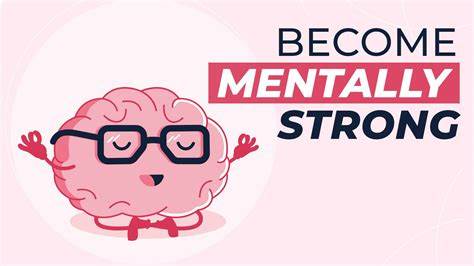Intermittent fasting (IF) is a popular eating pattern that cycles between periods of eating and voluntary fasting. It’s not a diet in the traditional sense, but rather an approach to when you eat, with many people finding it an effective strategy for weight loss. If you’re considering trying IF, understanding the different methods and how to safely incorporate it into your lifestyle is crucial. This detailed guide will explain how to practice intermittent fasting for weight loss, providing actionable steps and essential tips for success.
Understanding How Intermittent Fasting Works for Weight Loss
Intermittent fasting can contribute to weight loss through several mechanisms:
- Calorie Reduction: By restricting your eating window, you naturally consume fewer calories over the day, leading to a calorie deficit.
- Hormonal Changes: Fasting periods can lead to changes in hormone levels that promote fat burning. This includes a decrease in insulin (which signals fat storage) and an increase in norepinephrine (which helps break down fat).
- Metabolic Flexibility: IF may help your body become more efficient at switching between burning glucose (from food) and burning stored fat for energy.
Important Disclaimer: Before starting any new eating pattern, especially one that involves fasting, it is highly recommended to consult with a healthcare professional or a registered dietitian, especially if you have underlying health conditions, are pregnant, breastfeeding, or taking medications.
- Choose an Intermittent Fasting Method
There are several popular IF protocols. Selecting one that fits your lifestyle is key to long-term adherence.
- 16/8 Method (Leangains Protocol):
- How it works: Fast for 16 hours each day and eat during an 8-hour window. For example, if your eating window is 12 PM to 8 PM, you fast from 8 PM until 12 PM the next day.
- Pros: Generally considered the easiest to start with and sustain. It often involves skipping breakfast.
- Cons: Requires consistency daily.
- Best for: Beginners, those looking for a sustainable daily routine.
- 5:2 Method (The Fast Diet):
- How it works: Eat normally (without calorie restriction) for five days of the week, and on two non-consecutive days, restrict your calorie intake to 500-600 calories (500 for women, 600 for men).
- Pros: Flexibility on non-fasting days, suitable for those who prefer not to fast daily.
- Cons: Fasting days require careful calorie tracking and can be challenging.
- Best for: Those who prefer intense short fasts over daily restrictions.
- Eat-Stop-Eat:
- How it works: Involves one or two 24-hour fasts per week. For example, fasting from dinner on Monday until dinner on Tuesday.
- Pros: Can lead to significant calorie reduction over the week.
- Cons: More challenging than 16/8, requires discipline.
- Best for: More experienced fasters, those seeking significant weight loss.
- Alternate-Day Fasting (ADF):
- How it works: Fast every other day. On fasting days, you either consume no calories or very few (around 500 calories). On eating days, you eat normally.
- Pros: Can be very effective for weight loss.
- Cons: Can be very difficult to sustain due to frequent fasting days.
- Best for: Experienced fasters, those who can tolerate more frequent fasting.
- Prepare Your Body and Mind
Successful IF requires some initial adjustment.
- Gradual Approach: Don’t jump straight into a 24-hour fast. Start with shorter fasting windows (e.g., 12 hours) and gradually extend them as your body adapts. If doing 16/8, gradually push back your first meal.
- Hydrate Adequately: During fasting periods, it’s crucial to drink plenty of calorie-free fluids.
- Water: Plain water is your best friend.
- Black coffee: Unsweetened, no cream or milk.
- Plain tea: Unsweetened, no milk.
- Sparkling water: Unflavored.
- Electrolytes (Optional but Recommended): Especially in longer fasts, consider adding a pinch of Himalayan pink salt to your water for electrolytes, or consume electrolyte supplements that are calorie-free.
- Manage Hunger Pangs: Hunger comes in waves. Recognize that it will pass. Distract yourself with activities, drink more water, or have a calorie-free beverage.
- Listen to Your Body: If you feel unwell, dizzy, or excessively weak, break your fast. IF should support your health, not jeopardize it.
- What to Eat During Your Eating Window
While IF focuses on when you eat, what you eat is equally important for weight loss and overall health. IF is not a license to eat unhealthy foods.
- Focus on Whole, Unprocessed Foods:
- Lean Proteins: Chicken, fish, eggs, tofu, legumes. These help with satiety and muscle preservation.
- Healthy Fats: Avocados, nuts, seeds, olive oil. Essential for hormone production and satiety.
- Fiber-Rich Carbohydrates: Whole grains, fruits, vegetables. Provide sustained energy and digestive health.
- Prioritize Nutrient Density: Make sure your meals are packed with vitamins and minerals to compensate for the shorter eating window.
- Avoid Overeating: It’s easy to overcompensate during the eating window. Pay attention to hunger cues and stop when you’re satisfied, not stuffed.
- Limit Sugary Drinks and Processed Foods: These undermine the metabolic benefits of fasting and contribute to weight gain.
- Break Your Fast Gently: Avoid large, heavy meals immediately after a long fast, especially if you’re new to IF. Start with easily digestible foods.
- Incorporate Exercise
Exercise complements intermittent fasting for optimal weight loss and body composition changes.
- Timing of Exercise:
- Fasted Workouts: Many people prefer exercising in a fasted state (e.g., morning workouts before breaking fast). This may enhance fat burning for some, but listen to your body.
- Fed Workouts: Others prefer exercising during their eating window or shortly after a meal for better energy.
- Types of Exercise:
- Strength Training: Helps preserve muscle mass during weight loss, which is crucial for metabolism.
- Cardio: Supports calorie expenditure and cardiovascular health.
- Adjust Intensity: If you’re new to IF, or feeling low on energy during a fast, consider lower-intensity workouts.
- Monitor Progress and Adjust
Consistency and tracking are key to seeing results.
- Track Your Eating and Fasting Windows: Use a simple journal or an app (e.g., Zero, Fastic) to log your fasting and eating times.
- Monitor Weight and Measurements: Track your weight weekly, and consider taking body measurements (waist, hips) every few weeks. Remember that weight fluctuations are normal.
- Observe Energy Levels and Mood: Pay attention to how you feel. If you’re consistently lethargic, irritable, or experiencing severe hunger, your chosen method might be too aggressive, or your diet during the eating window needs adjustment.
- Be Patient: Weight loss is a gradual process. Stick to your chosen method for several weeks before evaluating its effectiveness and making major changes.
- Troubleshoot Challenges:
- Extreme hunger: Ensure you’re eating enough nutrient-dense food during your eating window. Increase protein and fiber.
- Headaches: Often due to dehydration or electrolyte imbalance. Drink more water, consider a pinch of salt.
- Difficulty sleeping: Avoid caffeine late in your eating window. Ensure your fasting window isn’t too long.
- Social challenges: Plan meals around social events. Be flexible; one missed fast won’t derail progress.
By systematically applying these steps, choosing a method that suits you, and listening to your body, you can effectively practice intermittent fasting for weight loss and integrate it as a sustainable part of a healthier lifestyle.





